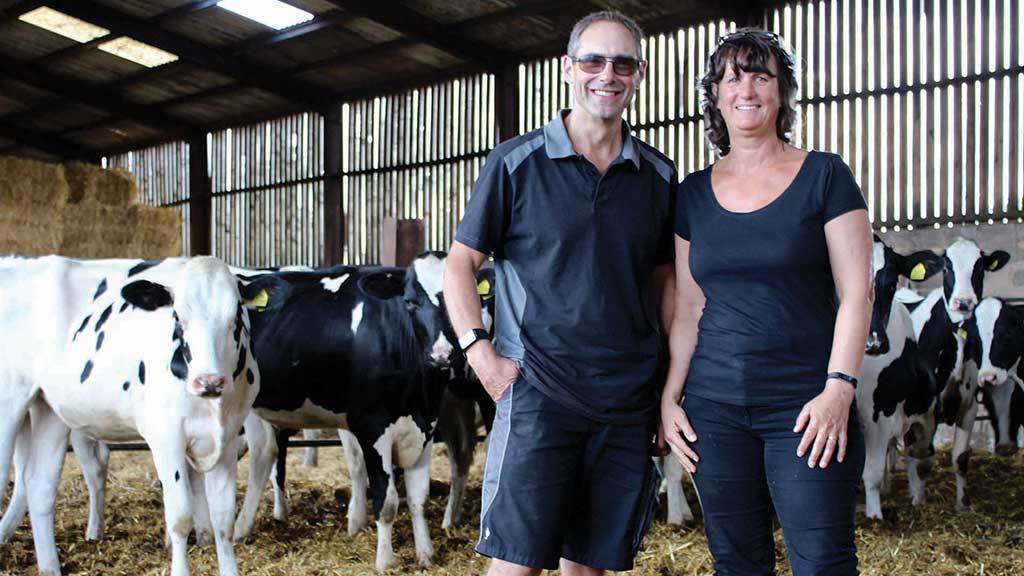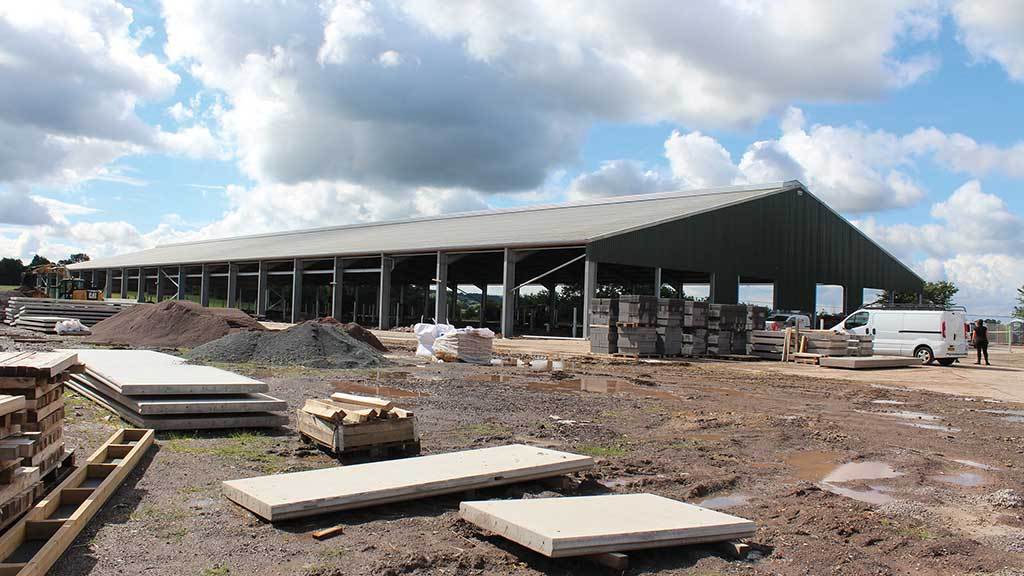Sexed semen is proving vital for herd expansion, while maximising the potential of every animal produced at Rodden Down Farm, Somerset.
Two years ago, the Hann family decided to ‘go for it’ and commit big time to a future in dairying by building a new shed, moving to robots and expanding cow numbers.

However, with a history of producing a lot of bull calves through the use of conventional semen, they knew they had to adopt a new strategy to produce their own high quality heifers, in a relatively short period.
As a result, Martin Hann, wife Susie, son Ryan and Martin’s parents Bernard and Pauline, made the decision to serve all cows and heifers to sexed semen.
Admittedly apprehensive about poor conception rates on cows, Martin has been ‘pleasantly surprised’ by the results.
He has been using a mix of normal sexed semen and SexedULTRA 4M, which includes double the amount of sexed semen cells per straw than other sexed straws, and has conception rates that are achieving parity with conventional semen and a guaranteed 90% gender purity.
Having averaged 1.8 services per conception on cows with conventional semen, Martin is now achieving two services per conception across both sexed semen types.
Heifers are averaging 1.2 services per conception with sexed, versus 1.1 on conventional. Every calf produced from sexed has also been a female.

More replacements
He says: “Our bull to heifer ratio was 65% bulls (on conventional) and that wasn’t good. I was looking at the number of straws per heifer calf and it was 2.8, which is not acceptable. I haven’t had a bull calf out of sexed semen yet.”
In the past, the business has produced about 30 replacements a year, but since shifting to sexed, they have managed to increase this by about 20-head.
Susie says avoiding breeding dairy bull calves also optimises business efficiencies: “We don’t want bull calves. We don’t keep them as they have no value to us, so they are sold as calves."
The Hanns carry out all of their own artificial insemination. Cows and heifers are given three to four chances with sexed semen, then served with a straw of mixed beef sires. This strategy means any bull calves produced are beef crosses, which maximises their value. These animals are then either sold as stores or finished beasts at nearby Frome Market.
Milking cow numbers currently stand at 185, with plans to gradually increase this to 300-head once the new building is complete.
The shed is currently being constructed and should be ready to house cattle in December. About 40-50 home-bred heifers will then join the herd in spring.
The robots have been installed with a view to increasing efficiencies, but also creating a good work-life balance and business fit for the future for 21-year-old Ryan.
Martin says: “We could not carry on with the system we had, so we asked Ryan if he wanted to carry on with cows or do something else? He wanted to do dairy, but not milk cows and be a cluster monkey.”
The hope is that moving the herd from the farm’s existing buildings, which were built in the 1960s, into the new shed, will enable cows to hit 10,000 litres/cow/year. This will come from improved cow comfort and increased milking frequency thanks to the robots.
Breeding Aims
The ability to monitor whether a cow is pregnant or in heat automatically, via the robot technology, should also help further drive conception rates by enabling insemination to be timed more effectively.
"Our bull to heifer ratio was 65% bulls (on conventional) and that wasn’t good. I haven’t had a bull calf out of sexed semen yet"- Martin Hann
Producing an animal which will suit the new robot system has been high on the agenda when selecting sires to breed replacements.
Udder type is now the number one selection criteria, with the Hanns favouring a high attachment, good teat placement, which is vital when milking on robots, a good udder cleft and teats which are not too close together.
Legs and feet have always been a priority, as Martin believes this links strongly to other health traits.
He says: “Udder health bizarrely stems from the legs and feet. If a cow is lame, you can almost guarantee you will get more clinical or sub-clinical mastitis, as she will be lying down more.”
Lame cows are also more likely to develop a left displaced abomasum and will not eat or drink as much and thus have lower production.
“It is important to keep lameness down for robots. If she can’t walk, the whole thing falls apart,” adds Martin, who believes if you get health traits right, production and milk constituents will follow.
Having originally been put off sexed semen due to cost and lack of sires available, Martin is now impressed by the broad range of bulls available and the fact the cost has reduced.
To meet breeding requirements, the farm uses a number of Cogent bulls. These currently include Famear and Agronaut. In the past, they have also used Mardi Gras, Goodwhone, Jacot Red and Mega-man, to name a few.
Future
Once herd numbers have reached target, the plan is to continue serving all animals to sexed semen. This will enable the business to start selling pedigree females as in-calf or freshly calved heifers, which will provide a ‘valuable income’.
However, Susie says sexed semen creates the opportunity to amend breeding strategy should situations change.
She says: “If there isn’t the market for pedigree Holstein heifers and there is for beef, there is no reason not to use sexed semen on the number you need for replacements and beef on the rest and sell the beef. You can change strategy, depending on the market.”
Rodden Down Farm Facts
- 185-cow pedigree Holstein ‘Cedcott’ herd, increasing to 300 cows
- 9600 litres/cow/year at 4.14% fat and 3.1% protein
- Herd currently milked through a 10:10 auto-tandem parlour
- Cows will move into a new shed in December and be milked on four DeLaval robots with ‘Herd Navigator’ software
- Cows graze for at least six months of year
- Average age at first calving of 27 months
Did you know?
SexedULTRA 4M includes four million sex sorted cells per straw compared to 2.1m cells per straw in normal sexed semen.